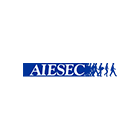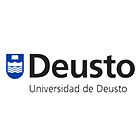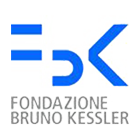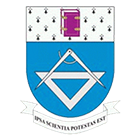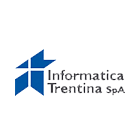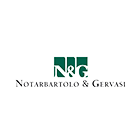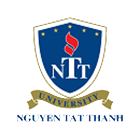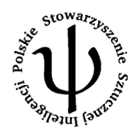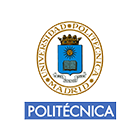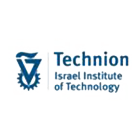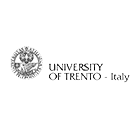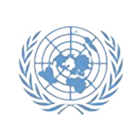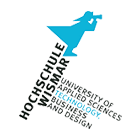Keynote Speaker:

Professor Milan Dado
Dean of the Faculty of Electrical Engineering, University of Zilina, Slovakia
Prof. Milan Dado (63) is Full Professor with the Department of Telecommunication and Multimedia. He is also dean of the Faculty of Electrical Engineering, former rector of the University of Zilina, former president of the Slovak rectors’ conference and has number of other activities in Slovakia and in foreign countries.
Main milestones for development of his international activities were his longer stays abroad e.g. Two-month stay at the York University Canada, Northern Telecom and Bell Canada in 1993, Six-month stay at the Royal Institute of Technology Stockholm in 1990 and Six -month stay at the Vienna University of Technology in 1981-1982. He has visited many other foreign institutions during last 24 years.
He has been actively involved in European research and education programs (TEMPUS, COST, LEONARDO, Socrates, 5th, 6th and 7th Framework Program, European University association projects…) and has managed national projects related to information and communication technologies, intelligent transportation systems, regional innovation strategies and e-learning. He is project coordinator of ERA CHAIR project in Intelligent Transport Systems at the University of Zilina.
He has been a member of a number of international committees and is COST program national coordinator and member of COST Committee of Senior Officials at the present time.
Title- Internet of Things as Advanced Technology to Support Mobility and Intelligent Transport
Abstract. This keynote paper creates the framework for the 2nd EAI International Conference on Mobility in the Internet of Things (IoT). The IoT offers advanced connectivity of devices, systems, and services that goes beyond machine-to-machine communications and covers a variety of domains and applications. The interconnection of embedded devices is expected in many fields including Mobility and Intelligent Transport. In the light of the latest knowledge and scientific projects findings the authors present actual R&D trends in the given field. New ideas, cutting-edge innovations and technologies for mobility agenda are needed together with a multidisciplinary perspective approach. The paper indicates most common recent aspects for future development of the IoT applications for support of Mobility and Intelligent Transport. Research and innovations projects including ERA Chair project in ITS at the University of Žilina are presented as examples of solutions for IoT applications for benefits of citizens (motorized and non-motorized public).
Keynote Speaker:
Professor Dušan Petráš
Slovak University of Technology in Bratislava-Slovakia, The former vice-rector of STU and Dean of the Faculty of Civil Engineering.
Also he is the president of Slovakian HVAC-Associasion SSTP (Slovak Society of Environmental Technology) and the past-president REHVA (Representative European Heating, Ventilation Association). Int the present he is the professor at the Department of Building services and dealing with the HVAC-systems in buildings.
His scientific work is focused on the energy conservation by performance of the buildings with respect to the providing the helth and comfortable indoor environment. He is author and cooauthor of 15 books (Energy auditing of Buildings, Renewable Energy Sources for Low-temperature systems, Low-temperature heating and High-temperature cooling…), 50 scientific papers in foreign journals/on international conferences as well as about 100 lectures in 25 countries in 3 world languages.
Professor Petráš is also member of ASHRAE, Academy of ISIAQ, REHVA Fellow, he was also the Guest Professor in DTU Lyngby (Denmark) and Guest Lecturer in FH Pinkafeld (Austria).
Dr. Predrag K. Nikolic, MBA
Associate Professor at the Faculty of Digital Production, EDUCONS University, Serbia and visiting professor at the Bergen Academy of Art and Design, Norway as well as Shenzhen School of Industrial Design, China.
He holds PhD in Digital Media - Interaction Design and in his research tries to explore connection between interactivity, perception and creativity as well as how to combine it with multimodal interface design concepts which could break constrains affected by usage of conventional computer-based environments.
Range of his work includes social media design, cross-platform application design and interactive installations such as MindCatcher-Essentiality, MindCatcher-Universality, MindCatcher-I, Universe, InnerBody, Ciklosol, Footbalinea Paradoxscope, etc.
Besides his academic, he also has a very dynamic digital media industry career through which he worked as senior executive for Yahoo, Ogilvy, Grey and J. Walter Thompson and lead online media initiatives for clients such as: CSA, IBM, Telenor, The Coca-Cola Company, Nestle, KRAFT, MARS, H&M, Credit Agricole Bank and many others.
He actively participate in Danube Region academic and education initiatives as one of the partners in Danube Academic Consortium (DAC).
The title of the presentation: Multimodal Interactions: Embedding New Meanings to Known Forms and Objects
Abstract:
The way we are experiencing and interacting with our everyday living environment define and anticipate our future behavior and actions. Today new digital technologies vastly diminish boundaries between virtual and physical world. Cross-reality design supported with recent mobile and context aware computing, gradually changed the concept of user interaction and moved it more toward usage of heterogeneous contexts, pervasive computing technologies, and multimodal spatial perception and transformed our living surroundings into smart environments, traditional living object into smart living objects. Ubiquitous computing vision implies more than ever to our lives. In order to make all these changes more human-centered in this paper we are investigated the cognitive and metaphorical aspects of future interface design strategies which could enhance user experience and ideas acceptance, communicated through multimodal interactions. In this paper we are presenting three tangible interfaces that we have developed for design and research purposes and results we collected during their public exposure. Hopefully, the results will give us sufficient insights for further investigations in the field of smart living environments and smart objects development. We believe that to fulfill these goals application and exploration of tangible interfaces frameworks and cognitive methods could be one of the crucial elements for the future research success.
Prof. George Teodorescu
International Institute for Integral Innovation, Köln, Germany
Bio:
Author of the Integral Innovation Theory, International expert for Innovation Consulting and Think Tank moderator, Key Note speaker, Professor for Integral Innovation, Head of danubius Academic Consortium (academic network for Integral Innovation), Director of the International Institute for Integral Innovation 4 i.
TOPIC
i-WALK a different approach to Urban Mobility
Reasons:
Sometimes is necessary to revisit the fundamentals of a topic, for getting a fresh approach.
The reason of mobility is reaching or necessary or desired, stationary targets distributed in a territory.
The humans are equipped naturally with the bipedal motoric system, which is enabling him to walk even on uneven ground, but for limited distances and quite slow
under a very limited load.
The urbanite’s comfort radius lays within 3 kilometers, which means more than half of an hour. This figures guilt for the average mature and healthy persons without any motoric disabilities.
Modern cities are no more built considering this human capability, but the vehicular mobility. As such they grew far beyond the natural human mobility.
Several break-troughs in active materials and robotics open a new approach to urban mobility, beyond mechanical power-platforms, which are the main vector since more than 100 years.
i-Walk is a modular wear-on concept promising a higher endurance, enhancing the radius of human pedestrian mobility and load carry-on comfort in the urban environment.
Jaroslav Holecek
Vice president ZAP , Slovakia
Bio:
Currently he is the President of Automotive Industry Association of the Slovak Republic, Automotive Industry Association of the Slovak Republic, before he was acting as Manager for the cooperation with the universities, researcher at the Slovak Technical University in Trnava and Human Resources Area Manager and Board Member at VW Group Rus Kaluga Rusko.
Title: Innovation as basic prerequisite of competitiveness of automotive industry in Slovakia







